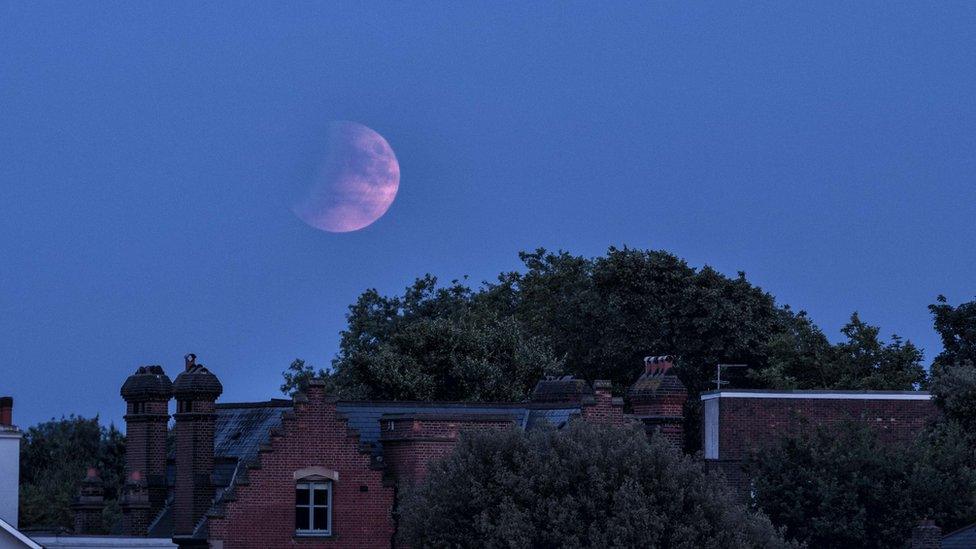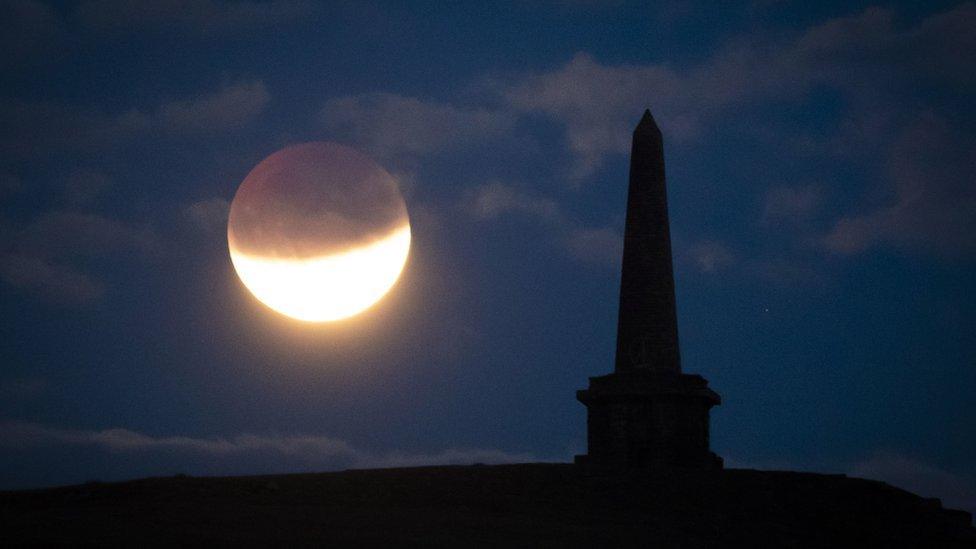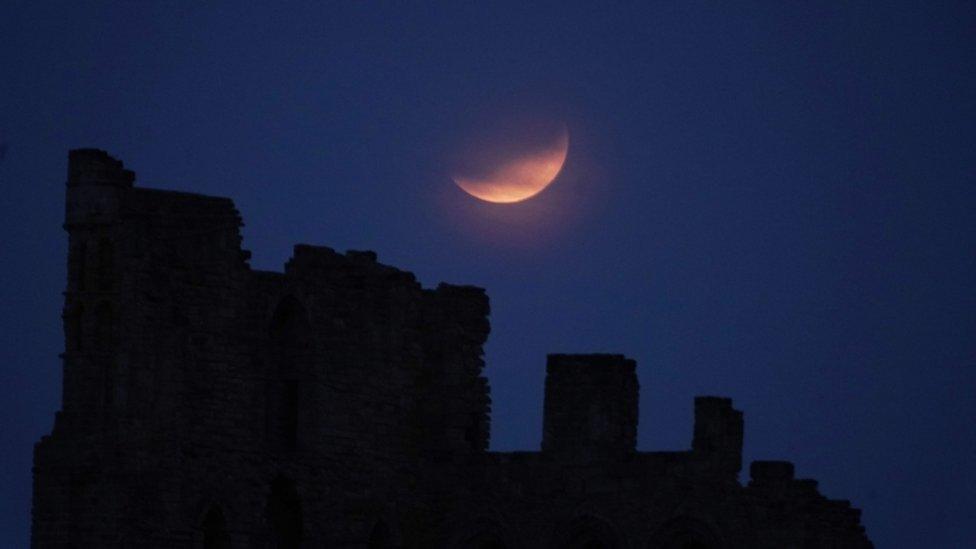Apollo 11: Partial lunar eclipse on 50th anniversary
- Published

Joanne Edwards captured this image of the Moon over Flintshire
Skywatchers across the UK have witnessed a partial lunar eclipse, 50 years to the day since the US mission to put men on the Moon lifted off.
The surface of Earth's satellite appeared red or dark grey at the height of the eclipse at about 22:30 BST.
Lunar eclipses occur when the Earth crosses between the Sun and Moon - casting a shadow on the lunar surface.
The Apollo 11 mission carrying Neil Armstrong, Buzz Aldrin and Michael Collins blasted off on 16 July 1969.
Four days later Armstrong became the first man to step on to the Moon's surface.
During a partial eclipse, some - but not all - of the Moon passes through the darkest area of shadow behind the Earth, the central region called the umbra.

The Moon was clearly visible over Blackheath in south east London

Matt Morris caught a plane flying past the Moon

The partial eclipse was seen from Avon beach in Mudeford, Dorset

The Moon appeared red above London as the Earth came between it and the Sun

Mostly clear skies also allowed the partial lunar eclipse to be seen from Stoodley Pike in West Yorkshire
BBC Weather was expecting mostly clear skies, meaning the eclipse could be seen across much of the UK.

The spectacle could be seen from Tynemouth Priory on the north-east coast of England
The event was visible across Europe and was also expected to be seen from Africa, much of Asia, the eastern part of South America, and western Australia.
Lunar eclipses can only occur on the night of a full moon.
The next partial lunar eclipse is not expected until 19 November 2021.

The partial eclipse could be seen across the world including in Brasilia, Brazil

The Moon appeared red ahead of the partial eclipse in Speyer, Germany
The last total lunar eclipse - sometimes known as a "super blood wolf moon" - was visible in the UK in January.
Skywatchers in the UK will not get the chance to see another until 2029 - weather permitting.
- Attribution
- Published16 July 2019

- Published13 July 2019

- Published21 January 2019
